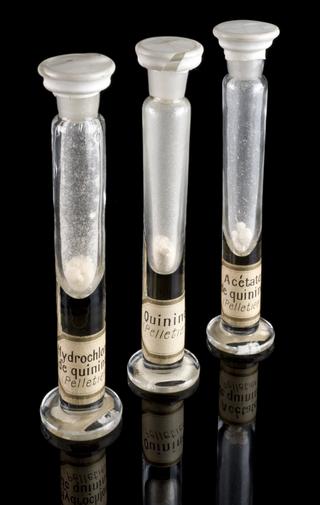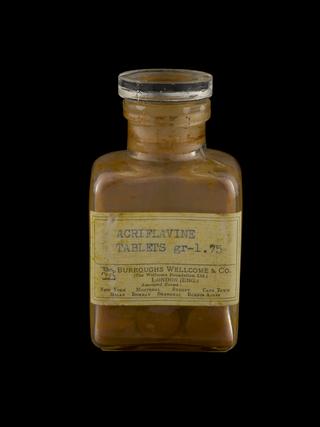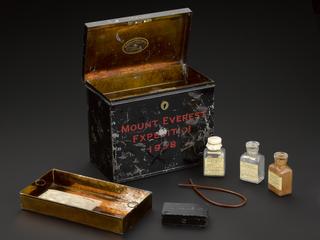

Sealed glass tube of Salvarsan 606 Dioxy diamino arseno benzol aniline arsanlic acid. Labelled 'Axt - salvarsan'. Prepared according to Ehrlich's original method
This yellow powder is known today as Arsphenamine. It was a revolutionary drug that came onto the market in 1910 to treat the sexually transmitted infection (STI), syphilis. It was the first truly effective anti-syphillitic drug as previous mercury-based cures often did more harm than good. It was discovered by German scientist Paul Ehrlich (1854-1915) and was originally known as Salvarsan 606.
This sealed glass tube contains a sample of Salvarsan 606 prepared to Ehrlich’s original method. It is shown with an illustration of its chemical make-up. Salvarsan 606 is an arsenic-based compound and was known as 606 because it was the 606th compound tested in Ehrlich’s laboratories. The name Salvarsan was chosen before going into large-scale manufacture by Hoechst Chemical Works in Germany.
Details
- Category:
- Materia Medica & Pharmacology
- Collection:
- Sir Henry Wellcome's Museum Collection
- Object Number:
- L2010-4001
- Materials:
- glass
- Measurements:
-
overall: 330 mm x 280 mm .28 mm,
- type:
- phial


